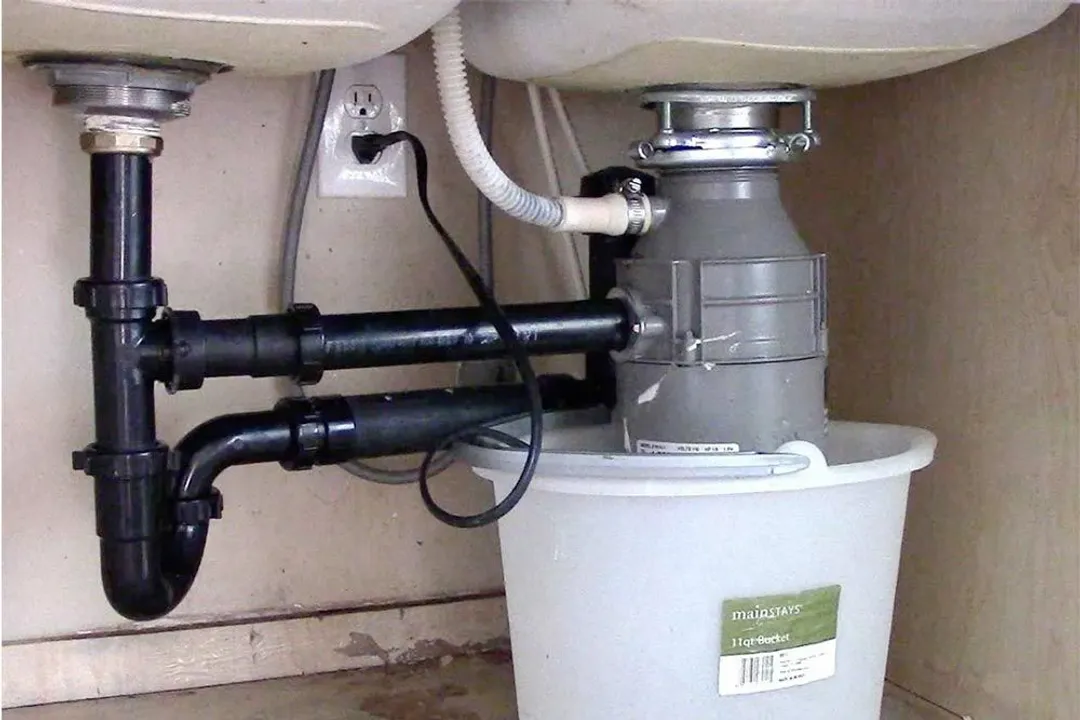Speedy Fixes for a Dripping Garbage Disposal
Speedy Fixes for a Dripping Garbage Disposal
Blog Article
We've stumbled on this post relating to How to fix a pretty consistent leak from my garbage disposal below on the net and think it made good sense to discuss it with you on my blog.

Waste disposal unit are crucial kitchen area appliances that help in disposing of food waste effectively. Nonetheless, a dripping garbage disposal can be a discouraging and unpleasant problem to handle. Luckily, lots of leakages can be repaired easily with a couple of straightforward actions. In this write-up, we will review exactly how to deal with a dripping waste disposal unit effectively.
Introduction
Garbage disposals are mounted under kitchen area sinks and are created to shred food waste right into smaller sized items, allowing it to pass through the plumbing system quickly. While these tools are generally trustworthy, leakages can take place in time as a result of damage, loose links, or damages to the unit.
Step-by-Step Overview to Taking Care Of a Leaking Garbage Disposal
Turn Off the Power
Before trying any kind of repairs, make sure that the power to the garbage disposal unit is turned off to stop the risk of electrical shock.
Situate the Leak
Identify the exact place of the leak and establish the reason
Tighten Connections
Utilize a wrench to tighten up any loose connections between the disposal unit and the plumbing system.
Replace Seals or Gaskets
If the leakage is due to used seals or gaskets, remove the old elements and replace them with new ones.
Patching Fractures or Holes
For fractures or holes in the disposal device, use epoxy or an ideal patching material to seal the damaged area.
Determining the Source of the Leak
Before trying to take care of a dripping garbage disposal, it is necessary to determine the resource of the leakage. This can normally be done with visual inspection or by conducting simple examinations.
Visual Assessment
Examine the garbage disposal system very carefully for any type of signs of water leak. Pay attention to areas around seals, gaskets, and link points.
Testing for Leakages
One way to examine for leaks is by running water through the disposal device and checking for any kind of noticeable indications of leak.
Common Sources Of Leaks in Waste Disposals
Worn Seals and Gaskets
Seals and gaskets play a critical function in preventing water from dripping out of the garbage disposal. With time, these components can weaken, leading to leakages around the disposal unit.
Loose Links
The links between the garbage disposal and the pipes system can end up being loose over time, triggering water to leakage out during operation.
Cracks or Holes in the Disposal Device
Physical damage to the waste disposal unit, such as fractures or openings in the real estate, can also lead to leaks.
Tools and Products Needed for Repairing a Dripping Waste Disposal Unit
Before beginning the fixing process, collect the needed tools and products, including a screwdriver, flexible wrench, plumber's putty, replacement seals or gaskets, and epoxy or patching material for fixing cracks or holes.
Checking the Waste Disposal Unit After Repair Service
Once the fixing is complete, evaluate the garbage disposal by running water through it to ensure that the leak has actually been dealt with.
Preventive Upkeep Tips to Stay Clear Of Future Leaks
To avoid future leakages, it is essential to carry out routine upkeep on your garbage disposal. This consists of maintaining it clean, preventing placing non-food items or tough objects down the disposal, and regularly looking for leaks or other issues.
Verdict
In conclusion, taking care of a leaking garbage disposal is a relatively simple process that can be completed with standard tools and products. By following the actions detailed in this post and practicing preventive upkeep, you can maintain your waste disposal unit in good working problem and prevent costly repair services in the future.
What to Do About a Leaking Garbage Disposal
A leaking garbage disposal often goes unnoticed until you confront a sopping cabinet, a foul-smelling puddle, or an audible drip-drip-drip from the unit. The fix can be frustrating, too, because the leak can stem from a number of components in the system. Fortunately, with a little sleuthing, you can zero in on the leak and—depending on the exact location—stop the icky oozing and repair the component that caused it. Worst case scenario, if it turns out that the garbage disposal must be replaced, installing a new one is a reasonable do-it-yourself task for those with basic plumbing skills. Read on to keep the cash you’d otherwise hand over to a pro.
Prepare to find the leak
Prior to testing the garbage disposal for leaks, unplug it at the wall outlet and turn off the power from the breaker box to prevent electrical shock. Then insert a watertight sink stopper into your sink drain and wipe the unit dry with a clean cloth. In any handy container, mix a few drops of food coloring into a few cups of water, and pour the dyed water onto the sink stopper to help you locate the leak.
Investigate the source
the top, where the disposal meets the sink drain the side, where the dishwasher hose or main drain pipe connects to the disposal or the bottom of the unit Inspect each of these locations while gliding a light-colored rag over the unit; the dyed water will readily show on the rag and reveal the location of the leak. If a leak isn’t immediately apparent, remove the sink stopper and pour a few more cups of dyed water down the sink drain, then check for leaks again. Leaks near the top of the unit are more likely to show themselves while the sink is plugged, while side and bottom leaks are more noticeable while the sink is unplugged.
The metal sink flange that sits directly inside the sink drain is typically sealed around the top with plumber’s putty (a clay-like sealant) and then secured from under the sink with bolts. If the plumber’s putty deteriorates, or the bolts loosen, the flange can no longer form a watertight seal between the sink drain and the disposal—which could cause a leak at the top of the unit.
To reseal the leaky flange, you must first detach the garbage disposal. Start by loosening the screws securing the main drain pipe to the disposal, then loosen the screws in the metal clamp securing the dishwasher hose to the disposal and detach the drain pipe and dishwasher hose from the disposal. Loosen the screws in the mounting ring that connects the disposal to the metal mounting assembly beneath the sink, then pull down the disposal and carefully set it on a clean, dry surface. Loosen the bolts in the mounting assembly with a wrench, then pull down the mounting assembly and set it near the disposal.

I have been very interested by Why Is and I hope you liked the new article. In case you enjoyed reading our article if you please don't forget to share it. Thanks a lot for your time spent reading it.
Book Inspection Report this page